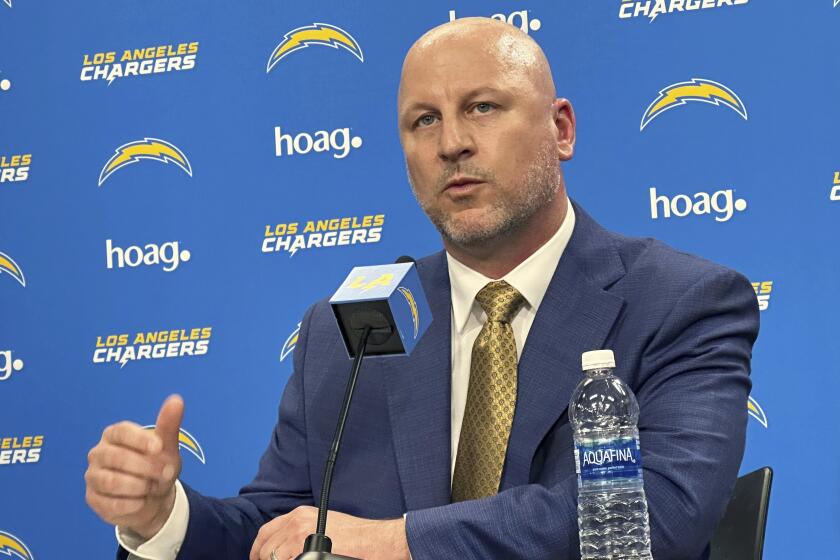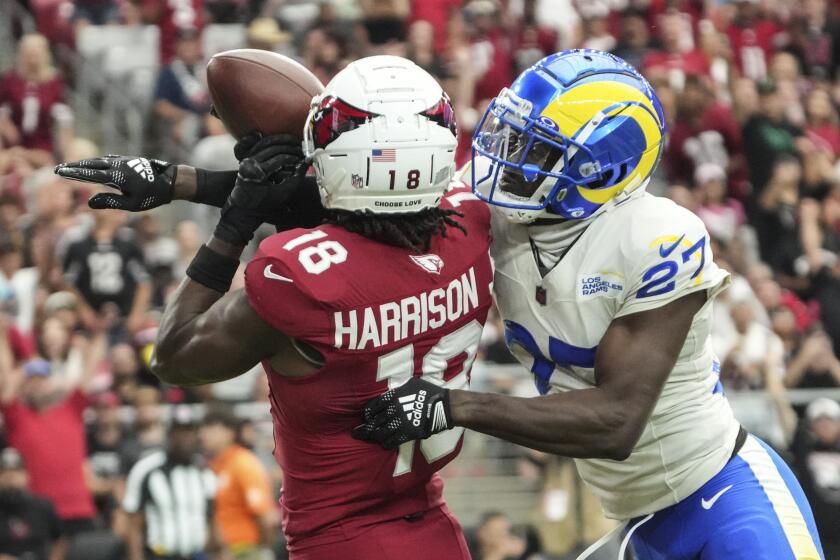Soccer newsletter: How a key win over the U.S. could change Canada soccer
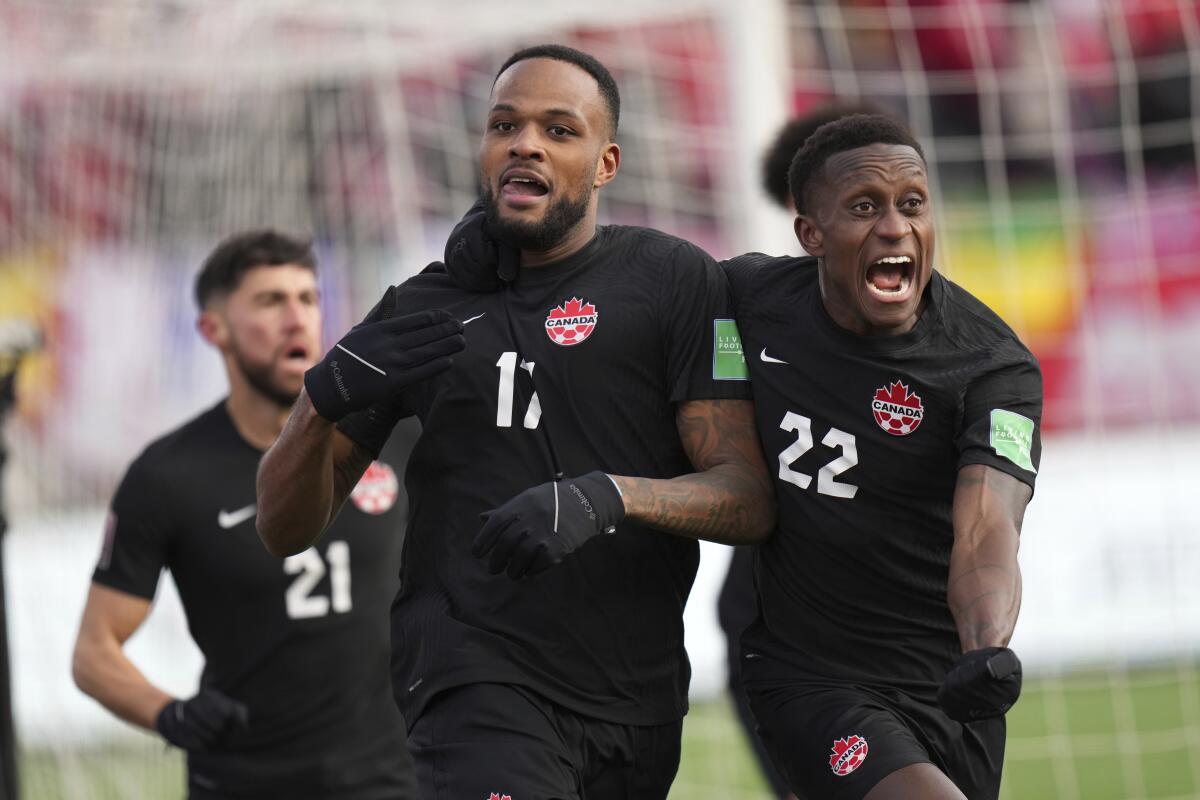
MINNEAPOLIS—Hello, and welcome to the weekly L.A. Times soccer newsletter; I’m Kevin Baxter, the Times’ soccer writer. Today we’ll take a look at a campaign Cobi Jones is assisting that’s designed to create opportunities for players in college and beyond, and we’ll applaud LAFC general manager John Thorrington on what was been an amazingly productive January.
But we start with World Cup qualifying, where Canada’s surprising success figures to have a long-lasting impact.
With Sunday’s 2-0 win over the U.S. in Hamilton, Ontario, unbeaten Canada extended its lead atop the CONCACAF qualifying table to four points with four games remaining and moved a big step closer to its first World Cup berth in 36 years.
And that’s causing quite a stir in a country whose athletic landscape traditionally has been dominated by winter sports.
“The national team has been beaten up for so long,” Canadian coach John Herdman said. “There’s a lot of people now that rally around the sport they love and can put on a red jersey and be proud that we are about football in this country.
“We’ve got stars now. We’ve got young star players that are going to be around for a generation.”
Stars such as Alphonso Davies, Bayern Munich’s 21-year-old winger who recently was chosen the most popular person from Edmonton in an online poll. Such as Cyle Larin, a former MLS rookie of the year who has scored a Canadian-record 23 times in 46 international caps. Such as Jonathan David, a 22-year-old, Brooklyn-born Haitian immigrant who, with 19 goals in 26 games, is scoring at an even faster rate than Larin.
Enjoying this newsletter? Consider subscribing to the Los Angeles Times
Your support helps us deliver the news that matters most. Become a subscriber.
It’s not so much a team as it is a brotherhood, said defender Sam Adekugbe, who was born to Nigerian parents in London and is one of five naturalized citizens on Canada’s roster.
“We have so much confidence in each other,” he said. “We’ve all grown up together. We’ve all come up in this last cycle through John Herdman. And I think when we see ourselves go to the U.S. and get a result, and go toe-to-toe with Mexico, our confidence grows.
“There’s nothing we can’t do. We’re a team that doesn’t fear anybody.”
Canada is building a foundation that will last more than one World Cup cycle. The average age of the players on its roster is 27, third-youngest in the CONCACAF tournament. And with Canada, along with the U.S. and Mexico, hosting the 2026 World Cup, the country is already guaranteed a spot in that competition to go along with the spot it’s on the verge of grasping this fall in Qatar.
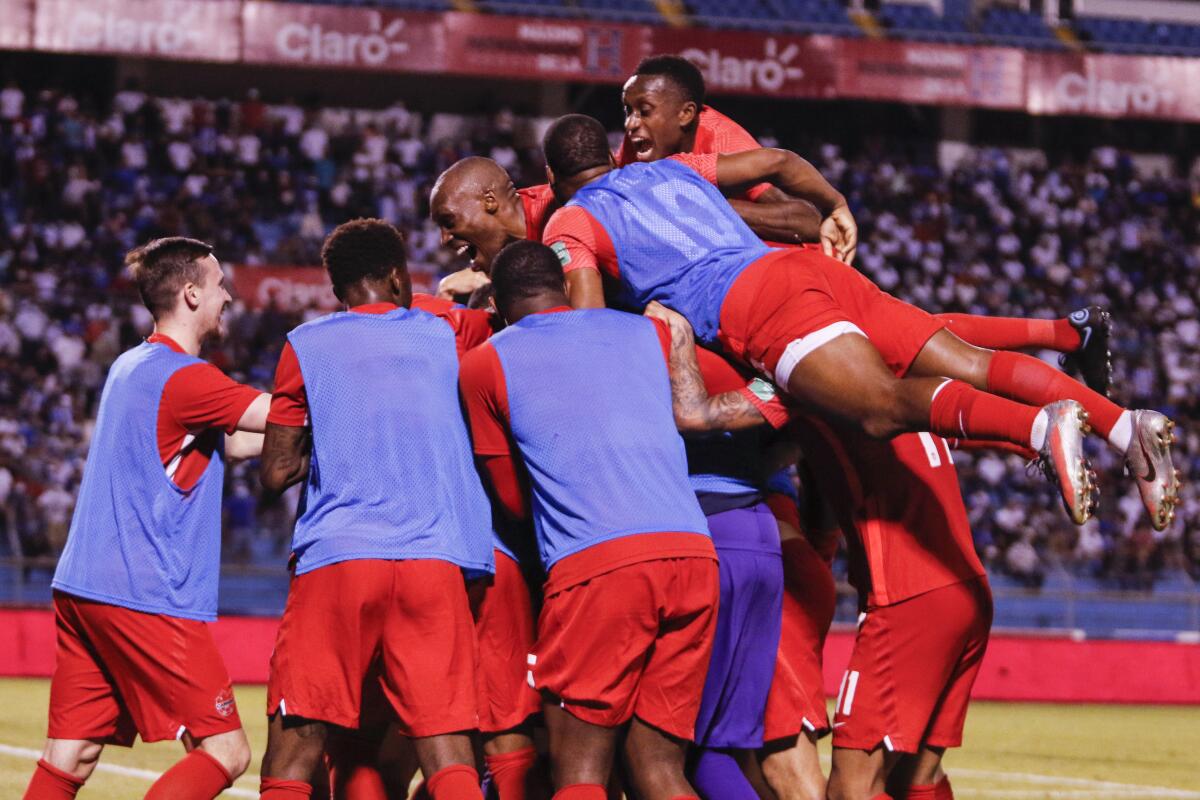
Back-to-back World Cup appearances will give Canadian soccer a platform and visibility it’s never had. And that’s not even the biggest benefit, because with a World Cup berth comes money. Lots of it.
Every team that makes it to the 2022 tournament will get $10.5 million from FIFA $1 billion prize-money purse. Local advertising and sponsorship deals, more lucrative TV deals and merchandizing rights in Canada will bring in millions more. It’s money that literally can change the direction of a national team program.
Take the case of Costa Rica, which played in one World Cup between 1958 and 1998. Qualifying for the 2002 tournament in Asia — and taking home $2.7 million in participation money — funded a run that saw Costa Rica play in four of the last five quadrennial tournaments.
“World Cup qualification, the financial opportunity that falls with that, if invested properly, can really set the country up for a long time,” said Herdman, who coached Canada into the quarterfinals of the 2015 Women’s World Cup. “This country could really start setting itself up as a top 20, top 30 nation, given our population. And once this passion catches fire, we’ll make sure the best athletes come to our sport.”
The only other time Canada played in a men’s World Cup, in 1986, the appearance had little effect. The team stayed just eight days and failed to score before quietly leaving Mexico after three consecutive shutout losses.
There’s nothing quiet about this team which, if not for COVID-19, probably wouldn’t be thinking about a trip to Qatar this fall.
Under the originally adopted qualifying procedures, the top six CONCACAF teams in the FIFA world rankings were to play a tournament among themselves to determine the region’s three World Cup representatives.
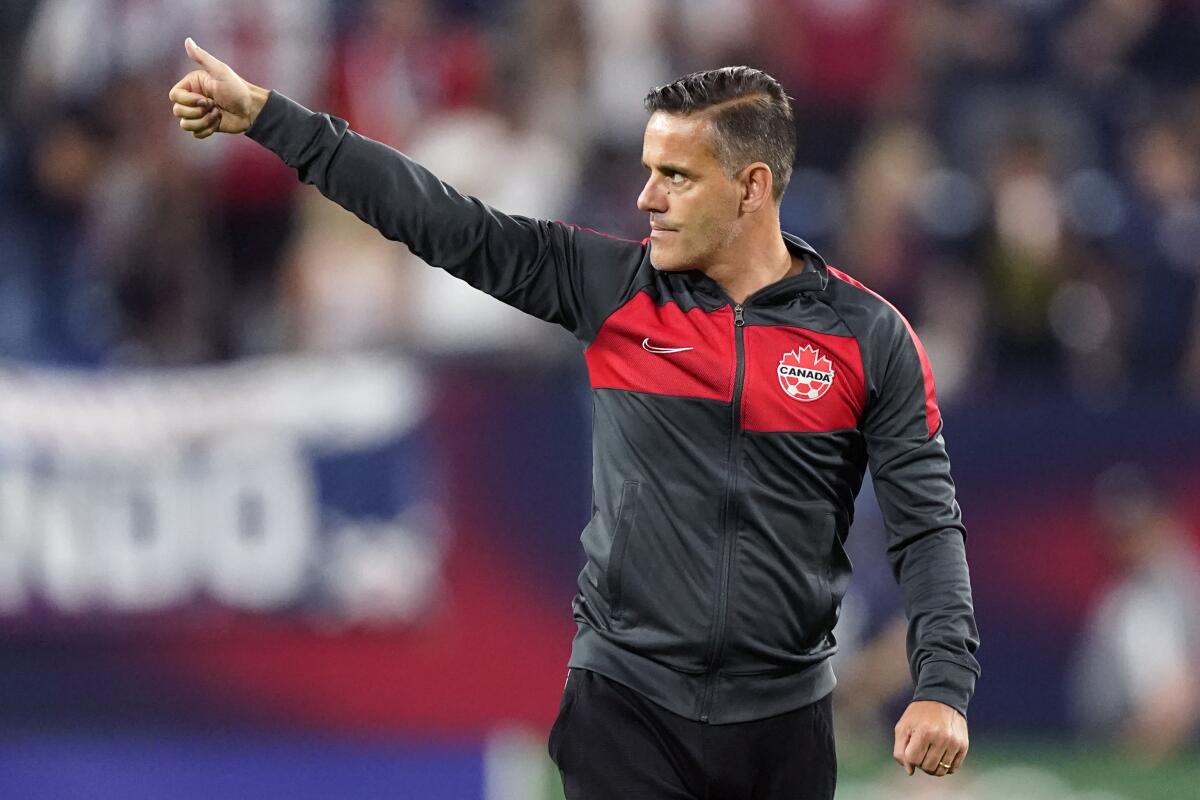
Canada, ranked seventh at the time, would have been left on the outside looking in.
But the coronavirus upset those plans when it began wreaking havoc with the international fixture schedule, so CONCACAF set up an additional round of qualifying that gave 30 other teams a chance to win their way into an expanded eight-team tournament. Canada took full advantage by winning all six of its games while outscoring its opponents 31-1.
It hasn’t let up in the final round, posting five shutouts in 10 games and taking road points against the U.S. and Mexico. It leads the octagonal with 17 goals and has allowed a tournament-low five.
“I don’t know what to say really. Too many emotions right now,” goalkeeper Milan Borjan said after Sunday’s win. “Thirteen years with the program, it’s been a long time. And this is what we deserve.”
“This is new Canada,” he added. “This is new soccer Canada. And we’re just going to keep pushing and fighting for the new generations. We will change football here.”
For the U.S. Sunday’s loss, if not reason for a full-blown panic, is at least cause for concern. The shutout was the third in 10 qualifiers for a star-laden U.S. squad that has scored just one goal in three other games.
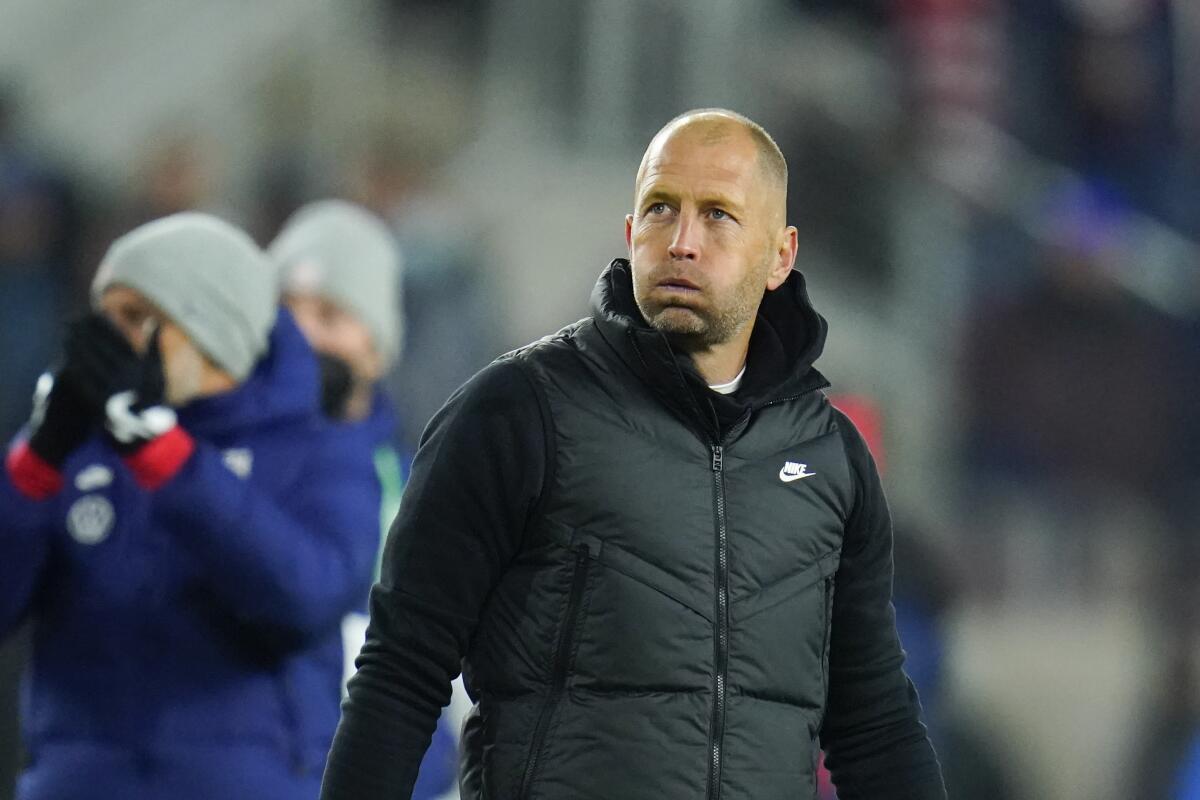
With four games left, including Wednesday’s date with winless Honduras in frigid St. Paul, Minn., the U.S. finds itself in second place, four points behind Canada and locked in a tight battle with Mexico and Panama for CONCACAF’s final two automatic passes to Qatar.
The three teams are separated by just a point, leaving the Americans with no room for error in crucial games with Mexico, on the road, and Panama, in Orlando, in the three-game March window.
Results, obviously, are the most important thing, but head coach Gregg Berhalter’s young team also needs to find some chemistry and rhythm because without it, even if the U.S. gets to the World Cup, it may not stay long.
In addition to poor form, the U.S. is dealing with injuries now as well. Center back Walker Zimmerman was unavailable for Canada because of a hamstring injury and midfielder Tyler Adams and defender Chris Richards got hurt during the game, leaving the Americans to play the final 10 minutes down a man.
“In the big picture, our focus right now is finishing off the window with a win,” Berhalter said. “If we can do that, we’ll be in good position. And then it’s going to be about the last window.”
CONCACAF World Cup qualifying table
Pts. W-L-T GF GA GD
Canada 22 6-0-4 17 5 12
U.S. 18 5-2-3 13 7 6
Mexico 18 5-2-3 13 8 5
Panama 17 5-3-2 14 12 2
Costa Rica 13 3-3-4 7 7 0
El Salvador 9 2-5-3 6 11 -5
Jamaica 7 1-5-4 9 15 -6
Honduras 3 0-7-3 5 19 -14
Results, Schedule
Jan. 27
U.S. 1, El Salvador 0
Costa Rica 1, Panama 0
Mexico 2, Jamaica 1
Canada 2, Honduras 0
Jan. 30
Canada 2, U.S. 0
Mexico 0, Costa Rica 0
El Salvador 2, Honduras 0
Panama 3, Jamaica 2
Wednesday
U.S. vs. Honduras, St. Paul, Minn.
Jamaica vs. Costa Rica
Mexico vs. Panama
El Salvador vs. Canada
Cobi’s newest challenge: Creating opportunities in soccer … and life
After Cobi Jones graduated from Westlake High in 1988, he walked on at UCLA because then-coach Sigi Schmid didn’t offer him a scholarship. That wasn’t — and still isn’t — an unusual experience for a Black soccer player.
“I have an understanding of not being recognized at the high school level,” said Jones, who went on to appear in a record 164 games for the national team and played in three World Cups. “That’s just the nature of sports.
“Someone’s always going to be overlooked.”
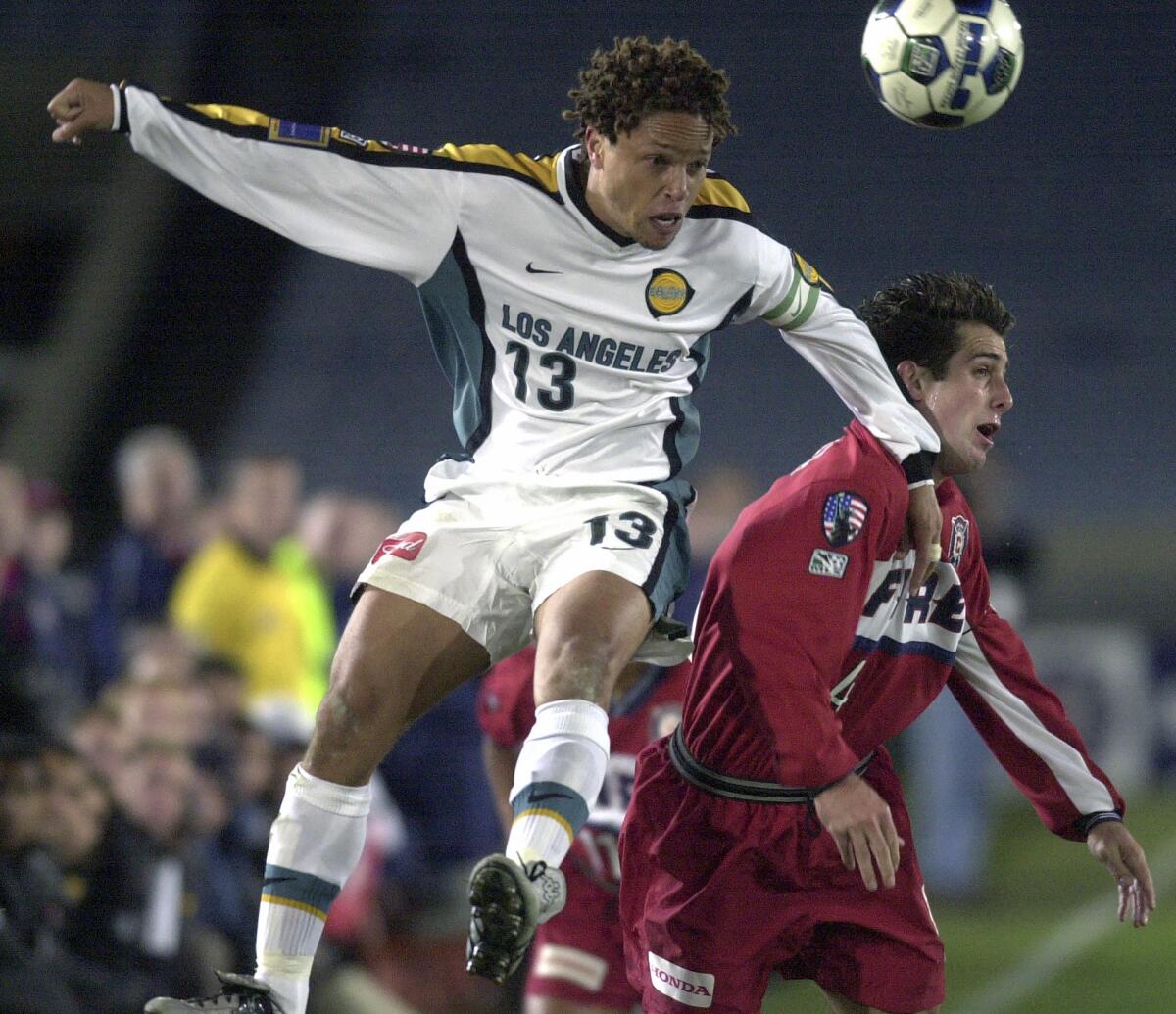
In an effort to drive down that number, Jones has joined the advisory board of the Black Star Initiative, a program designed to accelerate the growth of soccer in Black communities and increase opportunities for players at the college level. Toward that end the group held a two-day college identification camp in Inglewood in December that gave approximately 10 Division I coaches a chance to see some unheralded Black and Latino players up close.
“This is something that really never had been done,” said Patrick Rose, director of the initiative and a former baseball and soccer player at Howard University. “To really provide an environment where kids are able to be represented and feel comfortable in that environment.”
A parent of one of the 72 players who participated in the event said he’d never seen his son play as well as he did in those two days, something he attributed to an environment in which “he wasn’t one of one or two Black kids on the field.”
Black players are woefully under-represented in youth soccer programs in the U.S. and that pattern continues into the college and professional ranks. But progress is being made. When Lynn Williams joined the women’s national team in 2016, just 14 women of color had played soccer for the U.S. in World Cup or Olympic competition in the previous 25 years combined, according to the Washington Post.
The 26-woman roster called into training camp last month featured nine players of color.
“I didn’t see many people who looked like me,” said Williams, who grew up in Fresno playing for and against teams that rarely included Black athletes. “I actually find it pretty amazing how many people in my generation continued to play without seeing representation of themselves.”
She had the same experience in college at Pepperdine.
“It’s almost like you have to feel like you have to do double just to prove to people that you belong and that you’re meant to be in this space,” she said.
As a result, few Blacks go on to play in college and even fewer are recruited. That’s an attitude the Black Star Initiative is hoping to correct.
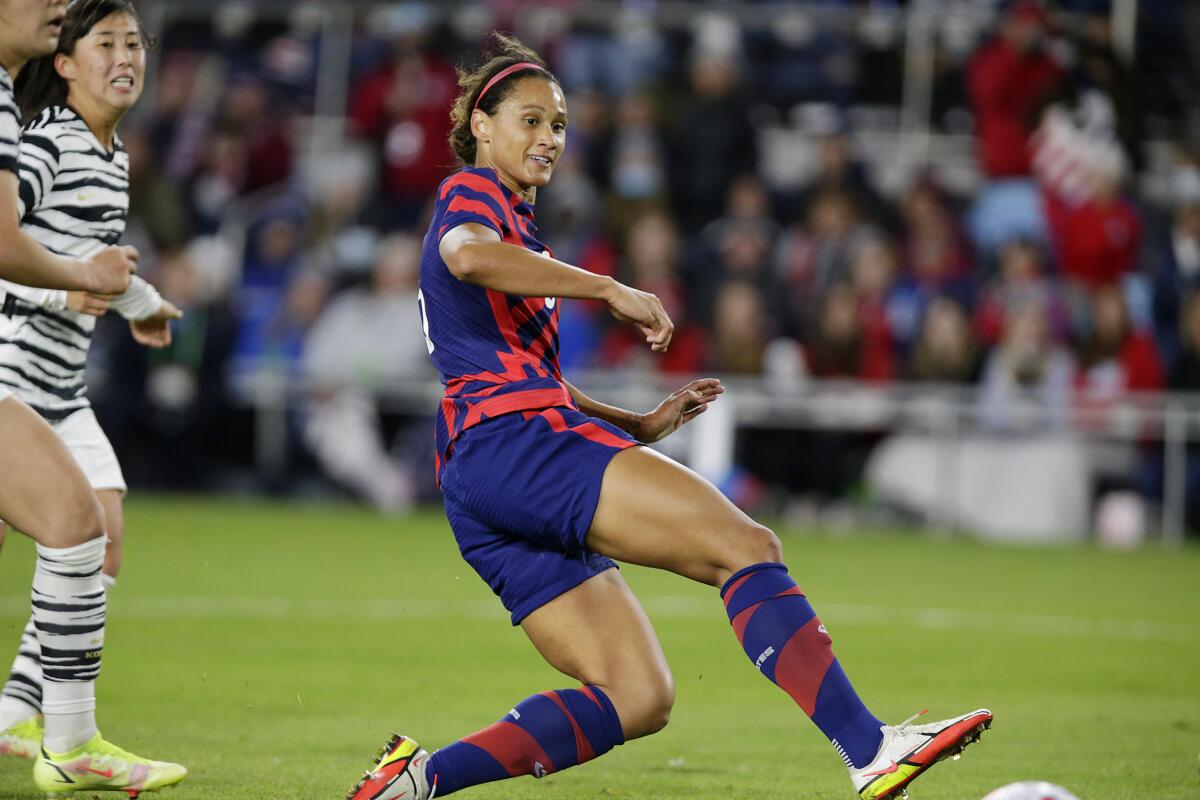
“There needs to be a program like this,” Jones said. “There’s, I guess, an image that soccer isn’t the main sport or the main pathway to financial success or sporting success within the Black community. Part of this initiative is to basically dispel all those false assumptions.”
“When you have more people within one culture that participate in a sport, you also find other avenues to be successful in that sport, not just on the field,” he continued. “You can be a trainer, you can be a coach. So just opening the door within the soccer world to the Black community is important.”
Among the colleges that sent coaches to the Inglewood event were Chicago State, Temple and Eastern Illinois as well as local schools including UCLA, UC Riverside and Cal State Dominguez Hills. Rose said a similar camp will be conducted for girls this summer.
For all those players, a chance to turn their athletic success into an educational opportunity can have a life-changing impact even if they never play after school.
“Just getting into college opens so many doors in life,” said Jones, who originally enrolled at UCLA planning to study environmental law, not play soccer. “The stats prove that that is a great barometer for future success.”
Has Thorrington maneuvered LAFC back into contention?
Few MLS general managers have ever had a better January than LAFC’s Thorrington, who started the month by naming former national team defender Steve Cherundolo his new head coach, then made three brilliant player acquisitions in quick succession to turn a team that was an also-ran in 2021 into potentially one of the strongest in the Western Conference?
First, he nudged aside a number of suitors to sign free-agent midfielder Ilie Sánchez. Hours later, he completed a trade with Colorado for national team midfielder Kellyn Acosta. Then a week after that he completed the trifecta by sending allocation money to Vancouver for goalkeeper Maxime Crépeau, a Canadian international.
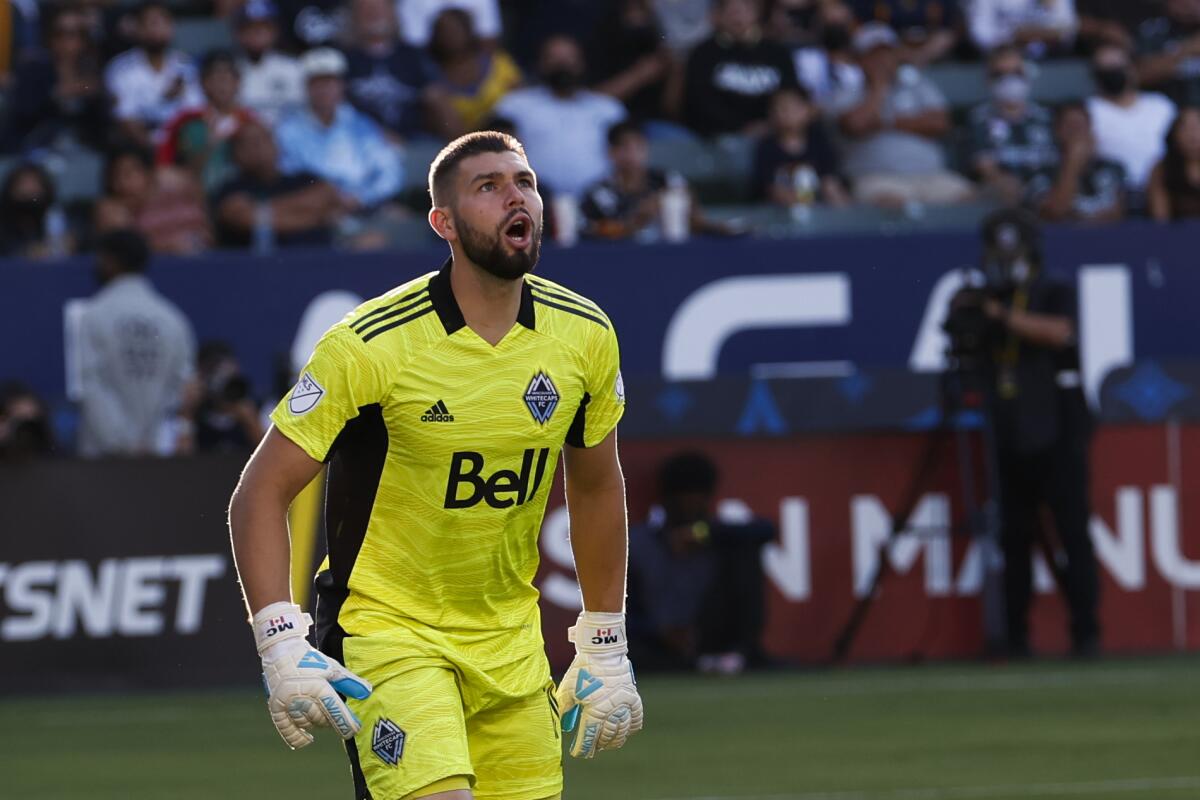
The three acquisitions plugged gaping holes in the LAFC roster, but none of that happens if Thorrington isn’t calculating and aggressive, first in building a pile of allocation money, then wagering it on three players their former teams were willing to part with.
The two trades could cost LAFC more than $2.5 million in general allocation money over the next three seasons, if performance bonuses are triggered. Crépeau cost $1 million more. But Thorrington had money to spend, having pocketed $1.9 million in GAM over the last seven months by trading Mark-Anthony Kaye, Corey Baird, Pablo Sisniega and Bryce Duke.
In his four seasons as a general manager Thorrington has made several bold trades — some of which, in retrospect, didn’t appear to work out. Before the 2020 season, for example, he sent Zimmerman, the national team defender, to Nashville and goalkeeper Tyler Miller to Minnesota United.
Zimmerman was named the league’s top defender each of the last two seasons and Miller was second in the Western Conference in shutouts and third in lowest goals-against average last season.
Without the two players LAFC struggled on defense the last two seasons in allowing 1.6 goals a game.
Thorrington, however, said he got what he wanted out of the deals and regrets neither. But both also were learning experiences, he admitted.
“With every signing we do a post-mortem and say, ‘With the information you had, now that you’ve done that, would you have done anything differently?’ ” he said. “Certainly, there are learnings that apply. But all of those moves have set us up for some of the moves that you will now see. And that’s a necessary part of being in MLS.”
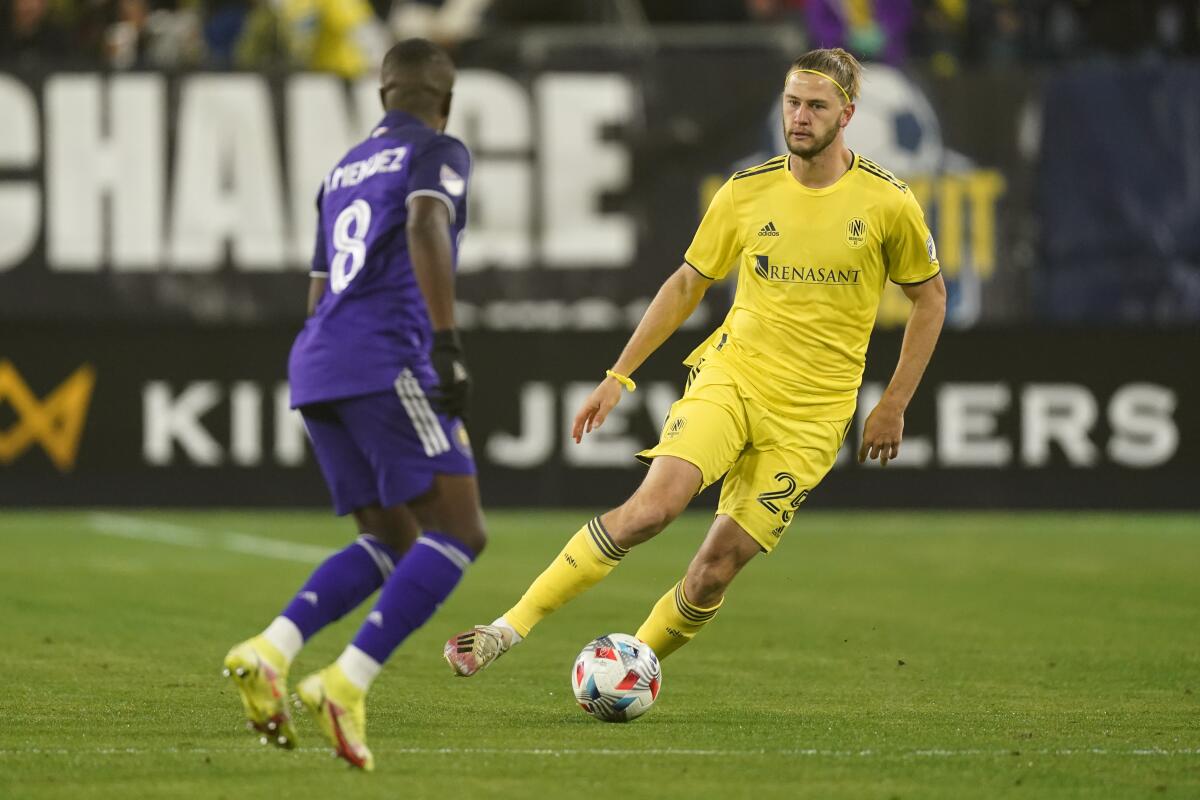
Thorrington disagreed with those who say Zimmerman’s success proves the deal was a bad one for LAFC. It was the richest trade in MLS history and brought the team not only $1.25 million but also an international roster slot. It literally was a deal Thorrington couldn’t refuse. So the general manager prefers to look forward rather than behind.
“I don’t agree necessarily that making a trade, and someone like Walker doing well, means that that was the wrong decision for LAFC,” he said. “It’s fantastic what Walker’s done. And I am not surprised in the slightest by it.
“Now my job, then, is to take those resources and make sure that we improve. In a [salary] cap-constrained environment you have to do these things. I understand how some people look at it from a different lens, and I’m not being defensive about these moves. You have to make these decisions with the information you have at that particular time. And none of these decisions are taken lightly.”
NWSL makes a deal just in time
NWSL players are scheduled to report Tuesday for the start of a six-week training camp just hours after the league and its players’ association agreed on a historic collective-bargaining agreement, averting a possible work stoppage.
The CBA, the first labor deal between the players and the league, is for five seasons and calls for an additional incremental investment by NWSL owners of nearly $100 million. The agreement also calls on the NWSL to increase salaries, raise the minimum salary, offer 401(k) contributions, insurance policies and to cut the players in on revenue sharing and broadcast revenues, among other things.
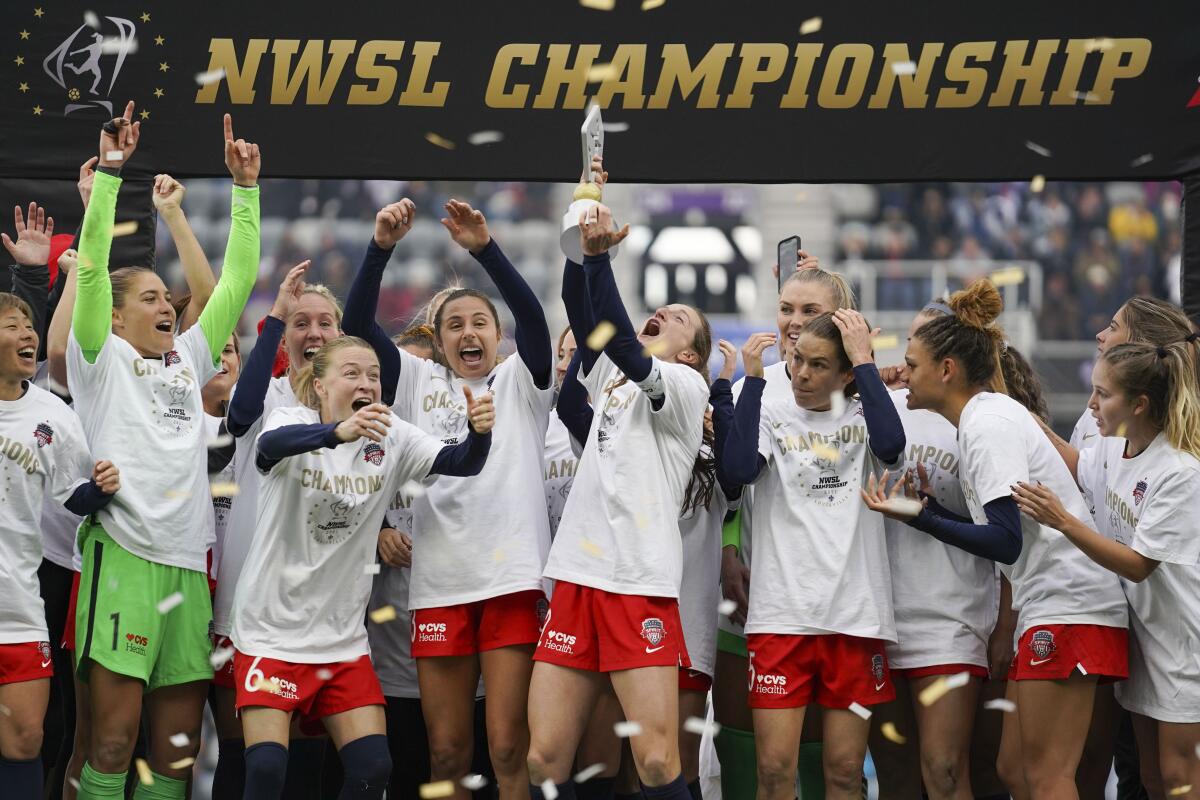
Free agency will be available in 2023, beginning with players with six years of service in the NWSL. Players will also be eligible for vacation, salary continuation for pregnant players and parental leave for new birth or adoptive parents.
“This is a historic moment for women’s soccer in the United States,” Marla Messing, the league’s interim chief executive, said in a statement. “This transformative agreement represents deserved advancements for our players, including significantly stronger compensation packages and benefits, enhanced training and playing environments, and a long-term commitment to continually improve the standards we all regard as essential to securing our position as the best women’s soccer league in the world.”
That contract’s approval clears the way for teams to begin preparing for the NWSL’s preseason Challenge Cup tournament, which kicks off March 19. This will be the NWSL’s 10th season, and also its largest, with the addition of expansion teams Angel City and the San Diego Wave taking the league to 12 teams.
The preseason Challenge Cup comprises three groups of four teams each. The teams will play each other home and away with the winners of each group advancing to the tournament semifinals.
The title game will be played May 7.
After the 22-game regular season, the top six teams in a single table advance to the postseason. The NWSL championship game will be played the final weekend of October.
And finally there’s this …
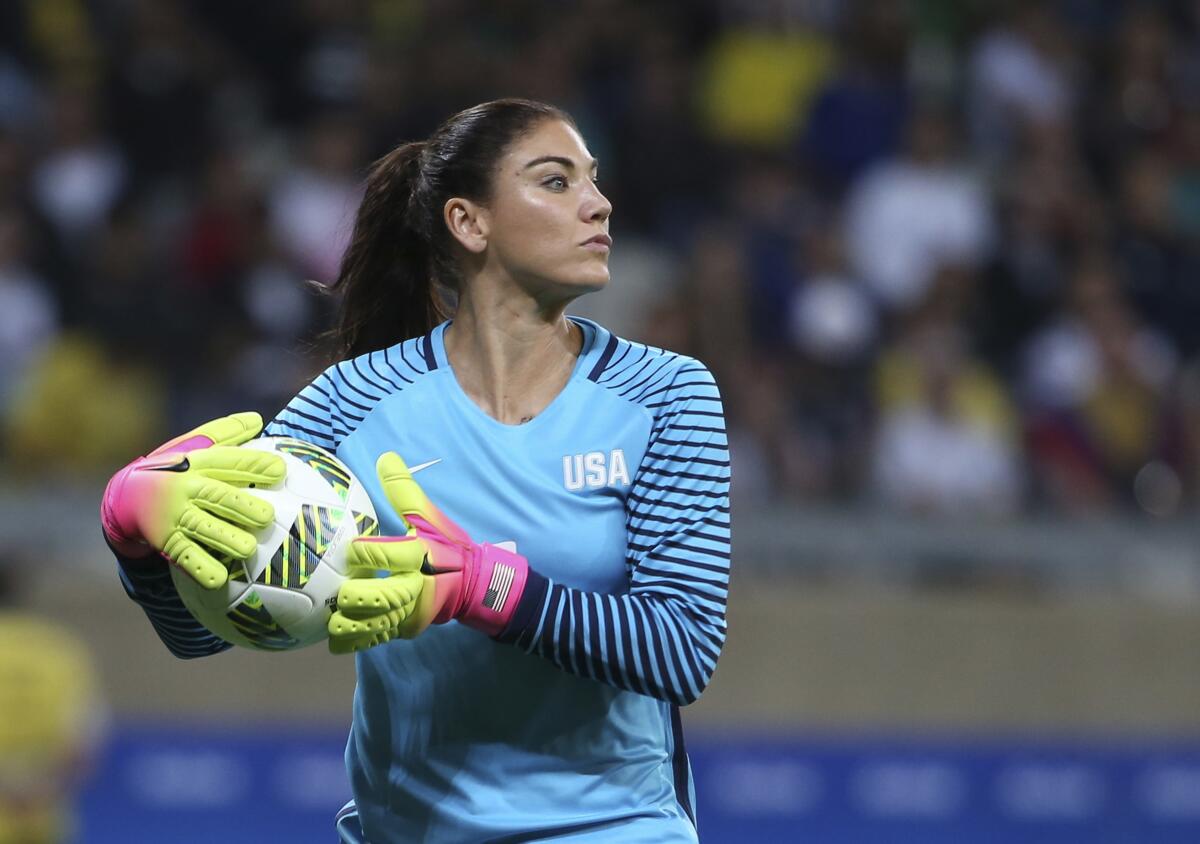
Former national team stars Clint Dempsey, Shannon Boxx and Hope Solo have been elected to the National Soccer Hall of Fame. They will be among six people inducted at a May 21 ceremony at Toyota Stadium in Frisco, Texas. Also going into the Hall after being chosen on the veterans ballot is former Bolivian international and DC United standout Marco Etcheverry and 1991 Women’s World Cup winner Linda Hamilton. Former FIFA referee Esse Baharmast is the Builder inductee. Two-time World Cup champion Christie Pearce Rampone also will be honored after deferring her induction last year. ... Angel City has acquired Stefany Ferrer Van Ginkel, a Barcelona-born midfielder who most recently played for Tigres in the Liga MX Femenil.
Podcast
Don’t miss my weekly podcast on the Corner of the Galaxy site as co-host Josh Guesman and I discuss the Galaxy each Monday. You can listen to the most recent podcast here.
Quotebook
“It’s the first time I really felt like I’m living in a football country. The flares were going off. It was like Liverpool arriving for a Champions League game. It’s absolutely what we’ve dreamed of, to get people excited. It’s great to see the football fans get behind us.”
Canadian coach John Herdman on the atmosphere that greeted his team at Tim Hortons Field in Hamilton before Sunday’s victory over the U.S.
Until next time...
Stay tuned for future newsletters. Subscribe here, and I’ll come right to your inbox. Something else you’d like to see? Email me. Or follow me on Twitter: @kbaxter11.
Go beyond the scoreboard
Get the latest on L.A.'s teams in the daily Sports Report newsletter.
You may occasionally receive promotional content from the Los Angeles Times.



